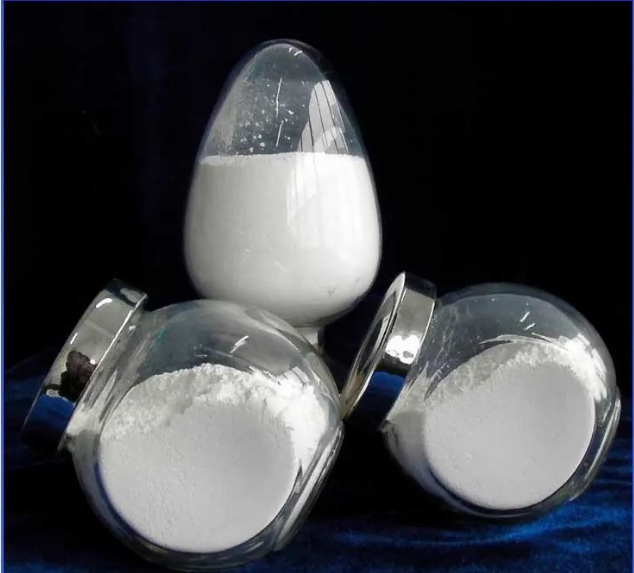Production Material:
(1) Magnesite ore is one of the main sources of magnesium oxide, and the (MgO) content accounts for about 47%. MgCO3 is lightly calcined (400-600°C) and then ground into a solid powder (MgO). Mineral resources are widely distributed in Liaoning, Xinjiang, Sichuan, Shandong, Tibet and other provinces and autonomous regions, with reserves of 2.8 billion tons, accounting for 30% of the world’s mineral resources.
(2) Dolomite ore [CaMg(CO3)2] is also the main source of magnesium oxide, and its reserves are larger and more widely distributed, with MgO content accounting for about 22%. The content of CaO accounts for about 30%, and the rest is 48%. The theoretical structure of MgCO3 and CaO is one to one. Dolomite is demarcated based on the content of MgCO3 above 25%, otherwise it cannot be used as an ore for the production of magnesium oxide, nor can it be called dolomite.
(3) Serpentine [Mg6(Si4O10)(OH)2] is also a raw material for the production of magnesium oxide, mainly magnesium hydrosilicate (3MgO•2SiO2•2H2O).
(4) The slag from smelting light magnesium alloys is also the raw material for producing magnesium oxide.

Preparation Process:
1. Brine-lime method: The milk of lime made from pre-purified and refined brine and digested and slag-removed lime is subjected to precipitation reaction in the sedimentation tank, and flocculant is added to the obtained slurry, and after mixing thoroughly, Enter the sedimentation tank for separation, and then filter, wash, dry, and crush to obtain the finished magnesium oxide.
2. Brine-ammonia water method: use brine that has been purified to remove impurities such as sulfate, carbon dioxide, and a small amount of boron as raw material, use ammonia water as a precipitant to carry out precipitation reaction in a reactor, and put a certain amount of crystal seeds before the reaction. Stir well. The ratio of brine to ammonia water is 1: (0.9-0.93), and the temperature is controlled at 40°C. After the reaction is finished, add a flocculant, and the precipitate is filtered, washed, dried, and pulverized to obtain a finished product of magnesium oxide. The test method needs to improve the yield, shorten the washing cycle, improve and perfect the production process.
3. Magnesite-hydrochloric acid-ammonia water method: magnesite ore and anthracite or coke are calcined in a shaft kiln to generate magnesium oxide and carbon dioxide. The bitter earth powder is made into a slurry with water, and then reacted with hydrochloric acid of a specified concentration to prepare a magnesium chloride solution. The magnesium chloride solution reacts with a certain concentration of ammonia water in a reactor, and the product is washed, settled, filtered, separated, dried and crushed to obtain a magnesium oxide product. A surface treatment agent can be added for surface treatment as needed.
4. Prepare a saturated MgCl2·6H2O solution at room temperature with microcrystalline magnesia, and pass in excess concentrated ammonia water under stirring at 70°C, then magnesia will slowly precipitate out. Note 1: The distilled water and ammonia water used must not contain CO2, the distilled water must be fully boiled, and the CO2 in NH3 must be removed by KOH. Note 2 of the device for preparing magnesium oxide: hard glass should be used for the reaction vessel to avoid the reaction between Mg(OH)2 and silicic acid. The obtained precipitate was left to stand in the mother liquor for two days, during which it could be heated several times to 70°C each time, and then the precipitate was decanted and washed. Then placed in a paraffin-coated nickel beaker, centrifuged and washed with CO2-free distilled water. Precipitation and decantation operations can be carried out in the device, and the obtained magnesium oxide is first vacuum-dried on potassium oxide, and then vacuum-dried on phosphorus pentoxide.
5. Large grain magnesium oxide. Add 243mL of water to a wide-mouthed platinum container, then add 1375g of KOH and 485g of MgCl2·6H2O, heat to 210°C on an electric furnace, and clarify after about half an hour. Then it was slowly cooled to room temperature within 18 hours, that is, crystals with a diameter of about 0.2 mL were precipitated, and dried at 100 ° C for 2 hours to obtain magnesium oxide with large crystals.